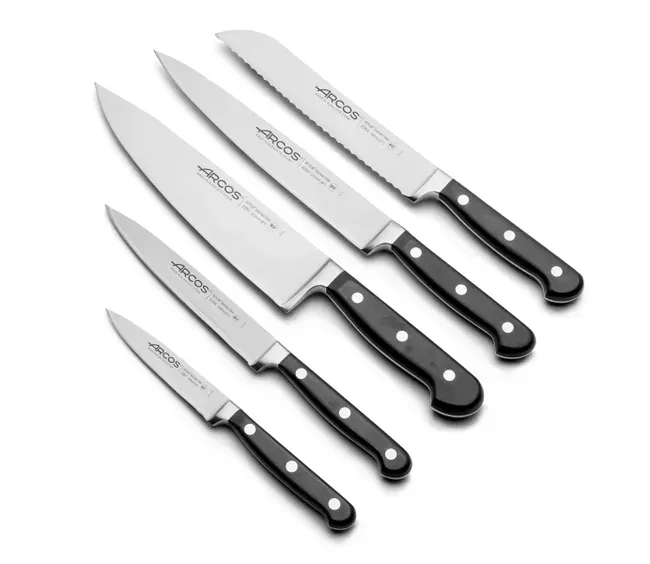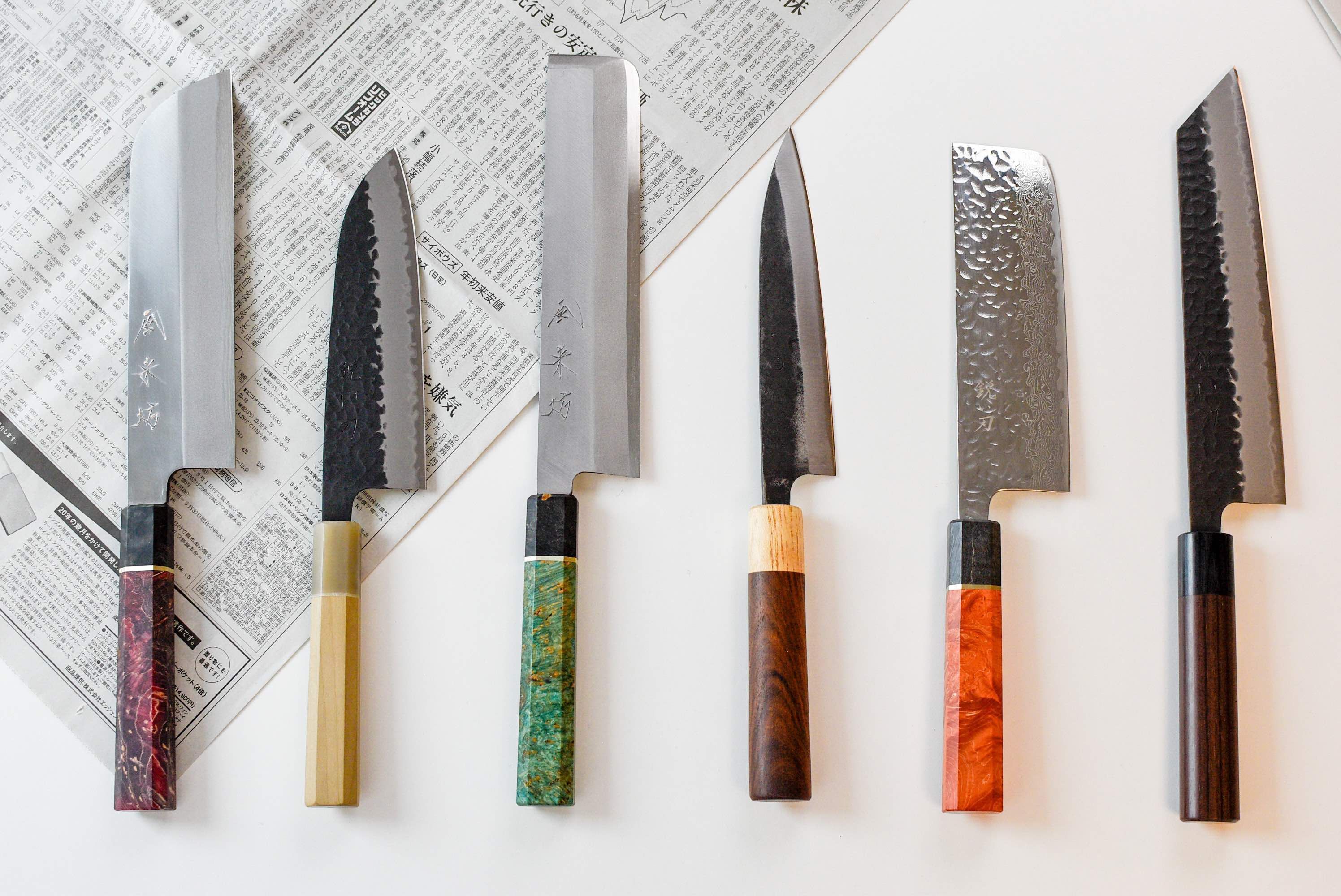European Kitchen Knives vs. Japanese Knives
Kitchen knives are essential tools that every chef, whether professional or amateur, greatly values. When it comes to choosing the best utensils for culinary tasks, two outstanding options are European kitchen knives and Japanese knives. Each type of knife reflects a rich culinary and artisanal tradition, making them true stars in any well-equipped kitchen. Let's explore the key differences between these two styles of knives to help you decide which one best suits your needs and personal preferences.
Blade and Material
The selection of the right knife begins with the blade and the material, which determine its performance, durability, and ease of maintenance.

Japanese Knives
- Blade: Japanese knives are known for their thin, sharp blades, composed of a hard high-carbon steel core (HRC 60+) coated with softer layers of steel, usually stainless.
- Hardness: The hardness of the steel in these knives ranges between 58 and 66 Rockwell degrees, offering exceptional sharpness, although at the expense of flexibility.
- Benefits: Their precise cutting enhances food presentation and preserves natural flavor and texture.
European Knives
- Blade: These knives feature thicker blades with a more robust edge, ideal for cutting through bones without the risk of damaging the blade.
- Hardness: With a hardness close to 54 Rockwell degrees, they are more resistant to bending, making them perfect for tasks that require strength.
- Benefits: Durability and versatility make them an ideal choice for heavy-duty tasks in the kitchen.
Geometry and Composition
The geometry of the blade and the design of the handle are essential foundations that influence the manageability and comfort of the knife.
Japanese Knives
- Bevel: They offer single or double bevels, with the former being ideal for preparing vegetables or filleting fish.
- Handles: Traditional (wa) handles are usually made of special lightweight wood and are comfortable.

European Knives
- Bevel: While they can also be single or double, their design is generally more robust.
- Handles: Built to last, these handles are heavier and provide stability.
Usage and Care
The usage and care of each type of knife directly influence its longevity and daily performance.
Japanese Knives
- Usage: Suitable for fine tasks, they should not be used on bones or very hard foods.
- Care: They require careful maintenance but can last a lifetime if treated properly.
European Knives
- Usage: Versatile for tasks that demand strength, such as boning.
- Care: More resistant to wear, they withstand intensive use.
Philosophy and Aesthetics
The philosophy and aesthetics behind the design of each knife reflect the cultural and artistic traditions of their countries of origin.
Japanese Knives
- Philosophy: They evoke perfection (kodawari) through damask patterns and delicate lines (tsuchime).
European Knives
- Philosophy: Inspired by durability, their robust designs are perfect for more demanding tasks.
| Aspect | Japanese Knives | European Knives |
|---|---|---|
| Blade | Thin and sharp | Thick and robust |
| Hardness (Rockwell) | 58-66 | 54 |
| Handle | Cylindrical and lightweight | Heavy and stable |
| Usage | Precise cutting | Intensive tasks |
| Care | Requires attention | Durable |
















